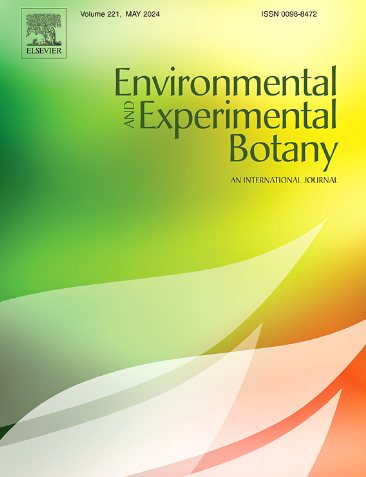The GPCR-type G protein PeuCOLD1 of Populus euphratica conferred the ability to resist low temperature stress
IF 4.7
2区 生物学
Q2 ENVIRONMENTAL SCIENCES
引用次数: 0
Abstract
GPCR-type G proteins (GTG) play an important role in plant defense against low-temperature stress. In this study, we identified and isolated the GTG protein PeuCOLD1 from Populus euphratica. This protein may serve as a model for the cold stress adaptation system in trees. PeuCOLD1 is predominantly expressed in the roots and its expression is significantly upregulated by low temperature, freezing, and drought stress. It is localized in the cell membrane and endoplasmic reticulum, facilitating NO3- and Ca2+ influx, thereby promoting poplar growth. To examine its potential functions, we overexpressed PeuCOLD1 in triploid P. tomentosa Carrière. The transgenic poplar exhibited improved growth and increased photosynthetic activity compared to the wild-type (WT) poplar under low-temperature stress. Thus, PeuCOLD1 enhances the ability of triploid P. tomentosa Carrière to withstand low-temperature stress without hindering its growth. PeuCOLD1 also enhances the reactive oxygen scavenging enzyme capacity of poplar under low-temperature stress, leading to reduced accumulation of reactive oxygen species (ROS) and malondialdehyde by activating the antioxidant system. Additionally, the results indicated that the transgenic poplar expressed cold-responsive (COR) genes more rapidly compared to the wild-type poplar under low-temperature stress. In conclusion, our findings suggest that overexpressing PeuCOLD1 (OE-PeuCOLD1) in triploid P. tomentosa Carrière influences poplar growth by regulating NO3- and Ca2+ influx. Moreover, it enhances resistance to low-temperature stress by regulating ROS scavenging and upregulating COR gene expression.
胡杨的gpcr型G蛋白PeuCOLD1赋予了胡杨抵抗低温胁迫的能力
gpcr型G蛋白(GTG)在植物抵御低温胁迫中起着重要作用。本研究从胡杨中鉴定并分离GTG蛋白PeuCOLD1。该蛋白可作为树木冷胁迫适应系统的模型。PeuCOLD1主要在根中表达,低温、冰冻和干旱胁迫显著上调其表达。它定位于细胞膜和内质网,促进NO3-和Ca2+内流,从而促进杨树生长。为了研究PeuCOLD1的潜在功能,我们在三倍体毛毛鼠中过表达PeuCOLD1。与野生型相比,转基因杨树在低温胁迫下的生长和光合活性均有所改善。因此,PeuCOLD1增强了三倍体毛毛假体耐低温胁迫的能力,而不妨碍其生长。PeuCOLD1还增强了低温胁迫下杨树活性氧清除酶的能力,通过激活抗氧化系统减少活性氧(ROS)和丙二醛的积累。结果表明,在低温胁迫下,转基因杨树冷响应基因(COR)的表达速度比野生型杨树快。综上所述,我们的研究结果表明,PeuCOLD1 (OE-PeuCOLD1)在三倍体毛白杨中的过表达通过调节NO3-和Ca2+内流来影响杨树的生长。此外,它还通过调节活性氧清除和上调COR基因表达来增强对低温胁迫的抗性。
本文章由计算机程序翻译,如有差异,请以英文原文为准。
求助全文
约1分钟内获得全文
求助全文
来源期刊

Environmental and Experimental Botany
环境科学-环境科学
CiteScore
9.30
自引率
5.30%
发文量
342
审稿时长
26 days
期刊介绍:
Environmental and Experimental Botany (EEB) publishes research papers on the physical, chemical, biological, molecular mechanisms and processes involved in the responses of plants to their environment.
In addition to research papers, the journal includes review articles. Submission is in agreement with the Editors-in-Chief.
The Journal also publishes special issues which are built by invited guest editors and are related to the main themes of EEB.
The areas covered by the Journal include:
(1) Responses of plants to heavy metals and pollutants
(2) Plant/water interactions (salinity, drought, flooding)
(3) Responses of plants to radiations ranging from UV-B to infrared
(4) Plant/atmosphere relations (ozone, CO2 , temperature)
(5) Global change impacts on plant ecophysiology
(6) Biotic interactions involving environmental factors.
 求助内容:
求助内容: 应助结果提醒方式:
应助结果提醒方式:


